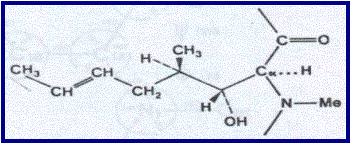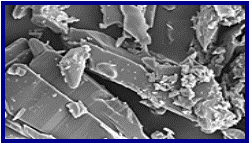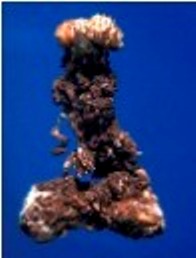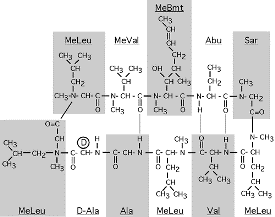Cyclosporine
What made organ transplants possible?
The important medicinal use of Cordyceps subsessilis is that it is the producer of cyclosporine. Cyclosporine is one of the only known drugs that is able to suppress the immune system enough so that organs and tissues, not original to the body, can be transplanted. If an immunosuppressant isn't used, the immune system will begin to attack the foreign material and the organ that is supposed to save a life will be killed, and along with it, the person who had the transplant, also.
So how does Cyclosporine work? Well, because of its chemical make up, it has the ability to regulate T cells without creating too much toxicity. Cyclosporine was able to stop the lymphocytes (a type of white blood cell) by performing on an unknown and exclusive step in the process while not inhibiting the production of other somatic cells. Cyclosporine binds to a certain protein, called cyclophilin, which then inhibits the enzyme, calcineurin.
Calcineurin is a protein phosphatase
(an enzyme that ends up taking away a phosphate group from a substan ce by a
chemical reaction where phosphoric acid is split up)
that signals lymphocytes (T cells) which are the cells that attack
foreign/invading material. When Cyclophilin and cyclosporine come into
play, they are able to bind with Calcineurin and inhibit its ability to signal
the T cells to attack the invading material. Thus, organ transplants can
become possible.
ce by a
chemical reaction where phosphoric acid is split up)
that signals lymphocytes (T cells) which are the cells that attack
foreign/invading material. When Cyclophilin and cyclosporine come into
play, they are able to bind with Calcineurin and inhibit its ability to signal
the T cells to attack the invading material. Thus, organ transplants can
become possible.
 Another name for cyclosporine
would be its active metabolite, cyclic undecapeptide. To study it
chemically, it is made up of 11 amino acids, 10 that were known, and one of
which was unknown. These amino acids are hydrophobic, neutral, and
able to be dissolved in nearly every organic material except water and hexane.
Another name for cyclosporine
would be its active metabolite, cyclic undecapeptide. To study it
chemically, it is made up of 11 amino acids, 10 that were known, and one of
which was unknown. These amino acids are hydrophobic, neutral, and
able to be dissolved in nearly every organic material except water and hexane.
The benefits of cyclosporine is that it doesn't effect the bone marrow like other previous immunosuppressant drugs do. One of the first drugs used in organ transplantation would be Azathioprine combined with corticosteroids. Azathioprine stops cell growth in all cells, which is bad because it then inhibits bone marrow. Besides effecting the bone marrow, there are other side effects as well. Some of these would include increased vulnerability to infections, hepatotoxicity (chemically caused liver damage), nausea, and vomiting. The corticosteroids inhibit lymphocytes and act as an anti-inflammatory. The side effects of this drug are diabetes and avascular necrosis in the bone (where the bone cells are dying because there is no blood supply getting to it).
There are many uses for cyclosporine, of course, the main one being organ transplants. The organs that have so far had successful transplants would be the skin, heart, lung, pancreas, kidney, bone marrow, and the small intestines. Besides being used for transplantation reasons, cyclosporine is also used in cases of autoimmune diseases. Some examples of this would be inflammatory bowel disease, chronic asthma, psoriasis (a condition where skin becomes red and flaky), atopic dermatitis (eczema), aplastic anaemia, and insulin-dependent diabetes mellitus.
Although this has made great strides
in the medical field, there are still some very worrisome aspects about
cyclosporine. One of these aspects would be the fact that it actually
encourages cancerous tumor growth and it is highly toxic. This could partially
be because it is blocking some of the lymphocytes which could be working on
keeping the cancer at bay, and also because it induces Transforming Growth
Factor Beta (TGF-β). This growth factor is a part of
all cells in an organism. It works by inducing cells to
grow, cell immune function, and others as well.
some very worrisome aspects about
cyclosporine. One of these aspects would be the fact that it actually
encourages cancerous tumor growth and it is highly toxic. This could partially
be because it is blocking some of the lymphocytes which could be working on
keeping the cancer at bay, and also because it induces Transforming Growth
Factor Beta (TGF-β). This growth factor is a part of
all cells in an organism. It works by inducing cells to
grow, cell immune function, and others as well.
If you would like to learn more about the history of cyclosporine and cyclosporine itself, visit this site!
If this fungus is still keeping your attention, continue on by clicking here to learn about a cyclosporine success story.
If this has gotten boring, go back to the home page by clicking here!


